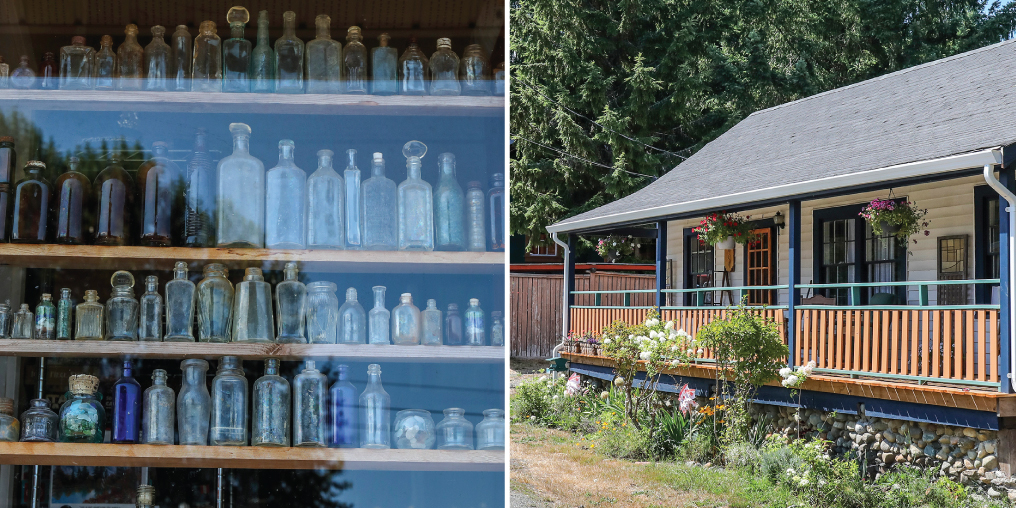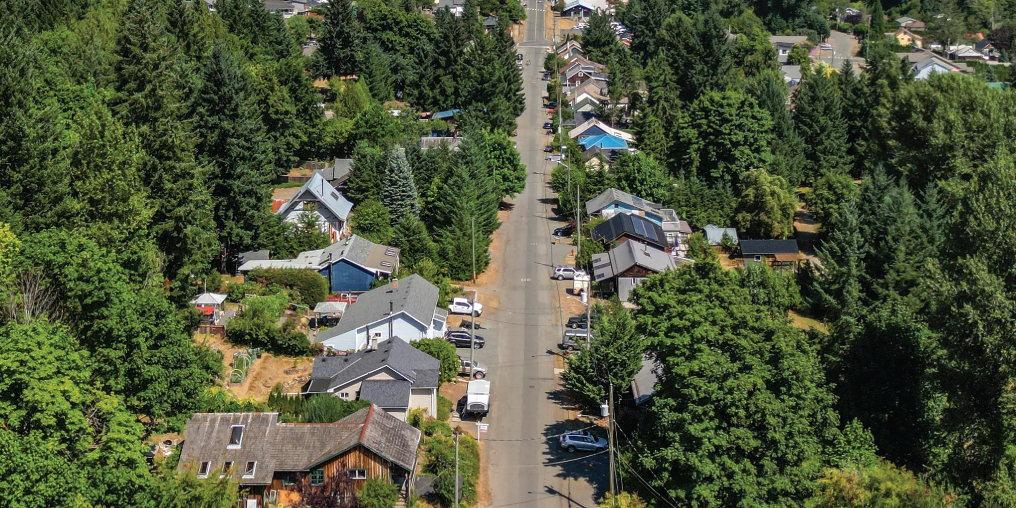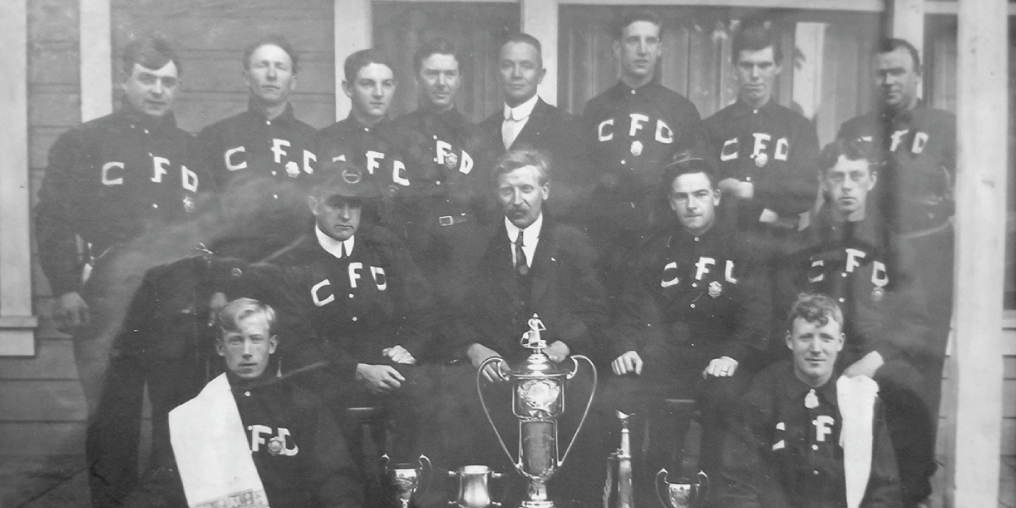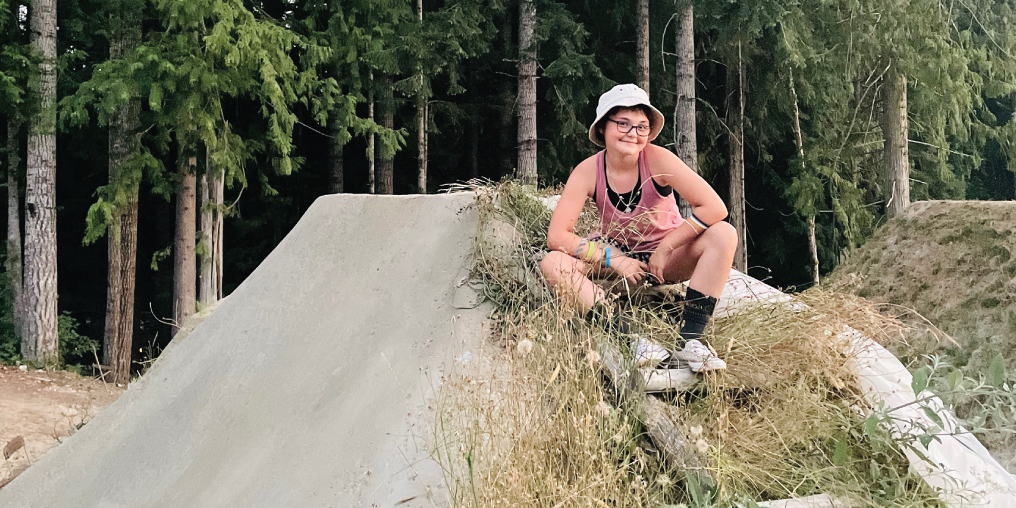It was late summer when my husband and I first rolled into Cumberland in our old Ford pickup. The year was 1996 and the village was still in a period of recovery after closure of the coal mines that had propelled its settlement for many decades. It was a time when you were likely to hear of a car crashing into the liquor store or a bar brawl spilling into the streets. Yet it had a natural beauty and warmth of welcome that was extraordinary for a small town.
Framed by the Beaufort mountain range, the streets were lined with colourful character houses in various states of repair; the locals were a friendly mix of loggers, bikers, truckers, artists, and musicians. We knew instantly that we had found the place to start our family—what we needed was a home.
When we pulled up to view the house on Camp Road (the colloquial/historic name for the western end of Dunsmuir Avenue), we were surprised by how close it was to the narrow street—but this lent the place a certain charm and allowed for a large back yard. The long, covered verandah, with its perch just above street level, was inviting. Vinyl siding replicated the whitewashed boards from 1889 beneath, and freshly painted trim highlighted its multi-paned windows.
We were offered a mortgage under the condition that we install a new foundation. At the time we didn’t have the money to buy wood for multiple forms, so we built one form, hand-mixed cement in a wheelbarrow, carted it under the house (which wasn’t lifted, so we had to crawl) and filled the form. Once that section was cured, we took the form apart, rebuilt it in the next spot, and repeated the process again. Gradually, the home’s history began to reveal itself as our spades unearthed antique bottles, ladies’ boot leather, and a double-handled saw blade that had likely been used to cut the trees that formed the house.
It was demanding work, but we were bolstered by the stream of neighbours who greeted us each day, offering help and welcoming us with fresh-baked bread and vegetables from their gardens. Dogs and kids ran freely through the street, and drivers would stop just to chat.

We learned that the house was one of the frontier cabins built by the Union Colliery Company to house workers in the settlement known originally as Union. The first known residents at our address were A.J. and Gertrude Taylor, who arrived in 1915. (They were originally booked on the Titanic, but fortunately missed the voyage and had to take a different vessel). A.J. lived a life dedicated to the community and was admitted to the Order of St. John for his work as captain of the local first aid team. He was president of the library association and served as a school board trustee for 25 years. He was also an alderman and a justice of the peace.
In those early days the houses were very much the same—cookie-cutter miners’ cabins with outdoor plumbing, ice boxes on the porch, and coal stoves in the kitchen for cooking and heat. Children played on the gravel road along which Chinese produce growers hauled wooden carts, filled with greens and vegetables, into town.
Camp kids grew up outside—skipping down the wooden sidewalks, scratching their names into rocks, and skating on the frozen swamp. The boys anticipated their 14th birthdays, when they could follow their fathers down to the coal seams.
Over the years, the houses on Camp Road have changed hands and each new resident has introduced their own character to create an eclectic mix of old and new. Learning about those who came before sheds light on the significance of our home and its place in our community’s history. It has survived fires, earthquakes, and over a century of use, and, with the work we’ve put into the building, we believe it will retain its integrity for generations to come.
Camp Road is a place where people and stories live. Where love letters can re-emerge from behind mantels where they slipped decades ago, and a well-placed shovel in the garden can unearth treasure. Where neighbours greet one another and fill the street to sing goodbye to longtime residents—and paint the asphalt with colourful images that serve as a reminder to slow down and enjoy the journey down this iconic road.
Camp Road houses are so much more than wood and nails and chips of paint. They are held together by a framework of memories built by generations of hardworking families. Many things have changed over the years, but what remains is a warm and generous sense of community spirit and a special place to call home.





